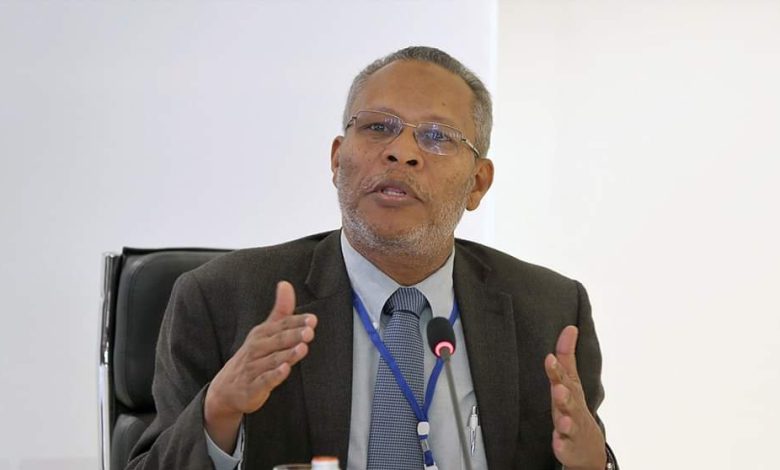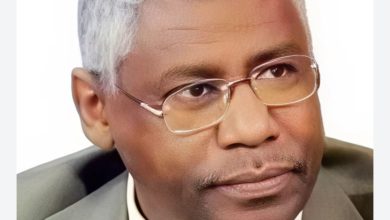An Unstable Transitional Period: The Transformations of the Hybrid Coalition in Sudan (2-6)

By: Hassan Elhag Ali Ahmad
First: Contentious policies and the hybridization of political alliances
The analytical method adopted by the study is based on a triangle consisting of the concepts: “Contentious politics,” “Hybridization,” and “Political alliances.”
1- Contentious politics
Contentious politics refers to every contentious interaction between political actors seeking to achieve interests on the one hand, and their allies, competitors, government, media, and public opinion on the other hand. The rise and fall of actors reflects how they mobilize and demobilize in the midst of the interaction of these groups. The term was first used in the study of social movements, but for some researchers it refers to a broader application of the concept of social movements to include other areas of conflict. For other researchers, it refers to the field of interaction between collective actors or those they represent, whether they are social movements or not. The Contentious politics approach believes that revolutions, civil wars, ethnic conflicts, social movements, and other forms of conflict result from similar causes, but the way they interact, sequence, and initial conditions are different, dividing their causes into mechanisms and processes.
Doug McAdam, Sidney Tarrow, and Charles Tilly have defined mechanisms as “a set of specific events that bring about shifts in the relationship between elements of identical or similar situations and across different situations.” In other words, there are similar causes for different events including revolutions, civil wars, ethnic conflicts and social movements that lead to a change in the relationships between actors. These causes can be divided into: recurring mechanisms and processes. Examples of mechanisms include extremism, political brokerage, and alliances. Interpreting contentious politics requires identifying these mechanisms and processes. All parties in Contentious politics are in a constant state of movement aimed at persuading, preventing, defeating, punishing, or cooperating with others, and this constitutes the dynamic of contentious politics. There are different types of mechanisms, but what this study focuses on are relational mechanisms; That is, those that shape and change relationships between actors or groups. Mechanisms do not act alone, but are in motion with other mechanisms within broader processes. As for the processes involved in contentious politics, they are a regular sequence of the previously presented mechanisms that result in – in a more complex and immediate manner – similar transformations of these elements. Thus, the processes are a series of causes and a set of mechanisms.
2- Hybridization
Studies of hybridity in transitional periods have focused their attention on hybrid systems. There is a variation in definitions in this regard. But a trend defined them as systems that combine authoritarian and democratic elements. Other studies indicate the presence of militias and paramilitary organizations participating with civilian and military government elements in post-conflict peace arrangements in what has been called “hybrid peace.” Based on these definitions that define hybridity in the transitional stages as the presence of a military or armed element in political arrangements, this study applies hybridity to consider the presence of a component of the military institution or armed movements in a political alliance with civilian forces. The reality of the hybridity in this alliance becomes more prominent if we take into account that it took place during what was supposed to be a transitional period towards building a democratic political system, beyond a stage of political tyranny that Sudan experienced for decades.
3- Alliance studies
Studies have dealt with alliance shifts from a regional perspective, such as the research completed by Maiy Darwish on the cohesion of Middle East alliances after 2011, and the emergence of the various Arab uprisings from the perspective of regional axes, and the extent to which internal political forces are linked to them, such as the alliances of the Islamic Resistance Movement “Hamas” or the Syrian Kurds. How can international relations research contribute to understanding the transformations of regional alliances and the quest of non-state actors to ally themselves and associate with them? However, this study focuses on internal alliances and how their formation is affected by regional or international powers. One of the contributions to the study of alliances is that it focused on divided societies. The study by Yasmin Berian and Marie Dubuque is an example of this type of research. They consider that there was no separation between alliance and social division. They must be studied as forming an integrated fabric that enables us to identify processes of discrimination and classification. This integrated approach enables researchers to know the contribution of alliances in the event of social division, by reinforcing existing divisions and creating new ones. Therefore, it is important to place the formation of alliances and their social and political impacts within a long-term perspective, focusing on the processes before and after alliance formation. The two researchers believe that alliances are temporary in nature, and as such they are not an anomaly, but rather a normal part of contentious politics. Internal disagreements are an essential part of the alliance, especially when groups with different cultural and ideological orientations, different identities and different legacies of political action join together. This enables researchers to study how differences crystallized, and how they were reconciled or reinvented.



